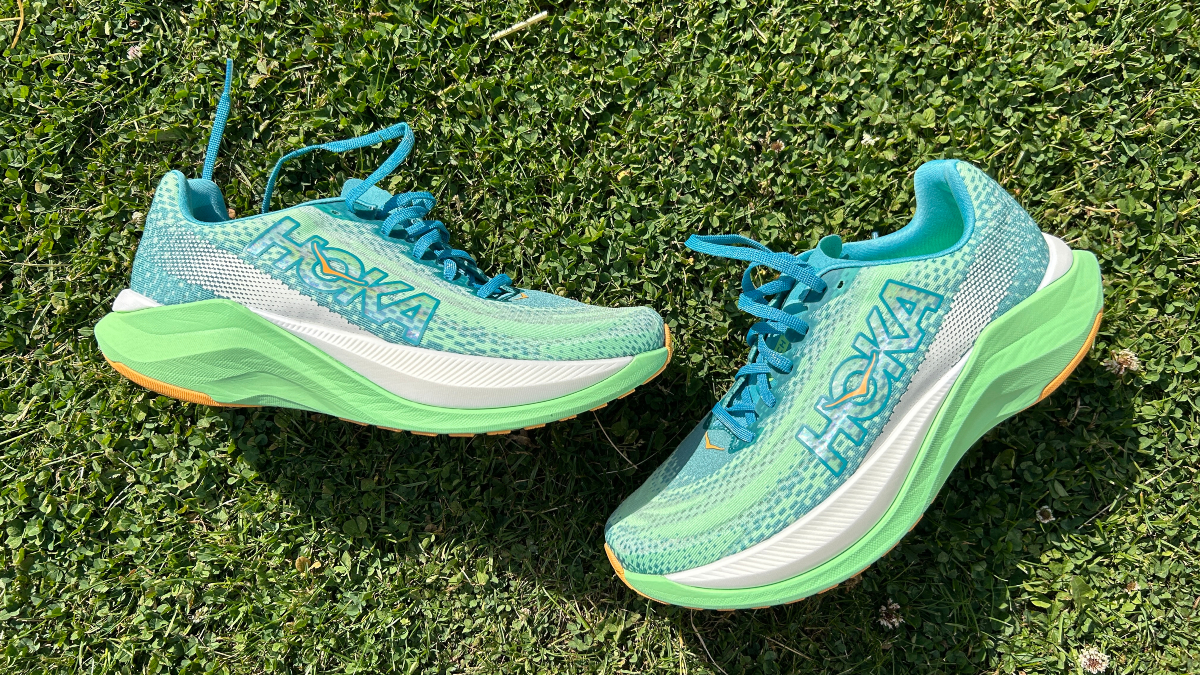Our Verdict
On paper the Hoka Mach X looks like the perfect do-it-all shoe, with enough cushioning and stability for easy miles, plus a plate to help add punch during faster runs. But while it does everything well, it’s just not as speedy as the best plated all-rounders that I’ve tested, such as the Saucony Endorphin Speed 3.
For
- Comfortable and versatile
- Pebax plate
- Stable for high-stack shoe
Against
- Not as fast as others
- Foam isn’t that soft or bouncy
You can trust Coach
I love the Hoka Mach 5. I also love the Saucony Endorphin Speed 3. At first glance, I thought the Hoka Mach X might be the glorious combination of those two shoes, and one that set a new standard for the best running shoes.
Unfortunately, that isn’t the case. The Hoka Mach X is a great shoe and will be perfect for some runners, but the category of plated trainers it sits within is competitive and, for me, the Hoka loses out to the Endorphin Speed 3 and others, owing to its relative lack of speed.
Hoka Mach X: Price And Availability
The Hoka Mach X launched on 30th June 2023 and costs $180 in the US and £160 in the UK. It’s more expensive than the Hoka Mach 5, but about par for a plated training shoe, with rivals including the Saucony Endorphin Speed 3 and Asics Magic Speed 3.
Design And Fit
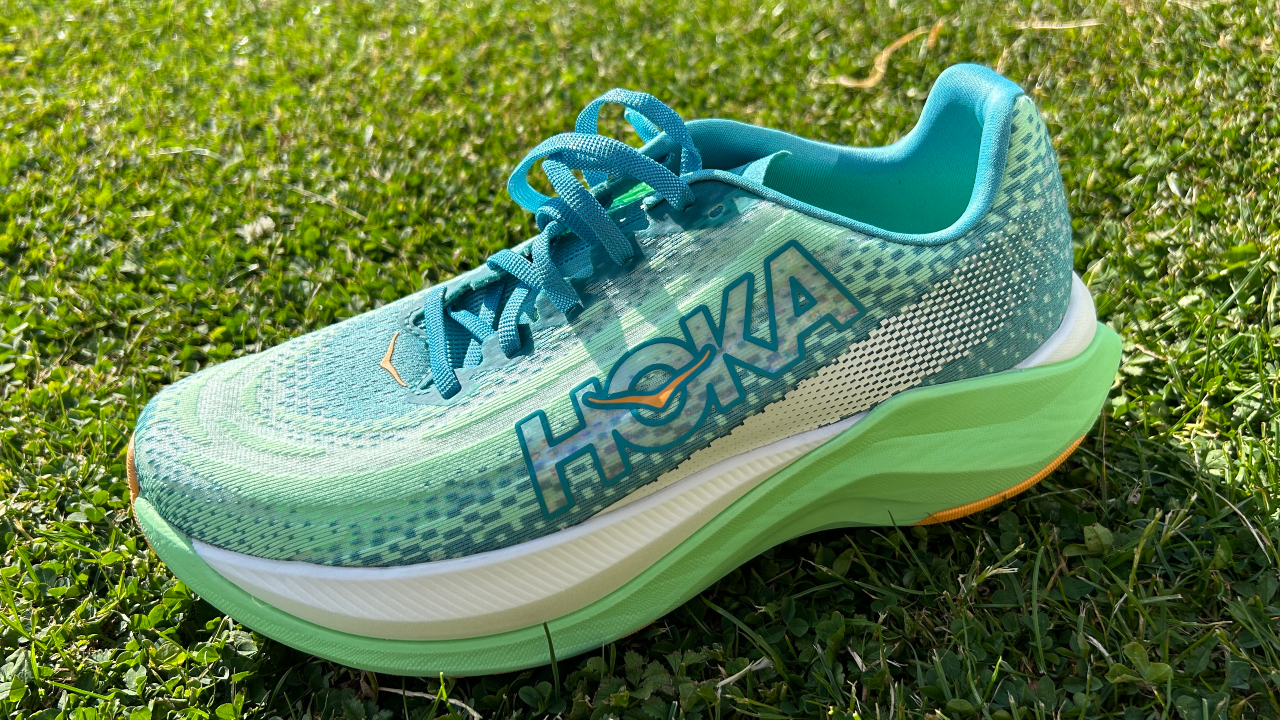
The Hoka Mach X is a plated training shoe designed to handle a variety of runs, but with an emphasis on speed. It’s positioned above the Hoka Mach 5 in Hoka’s line-up, packing more tech into its midsole than the relatively simple Mach 5, which doesn’t have a plate and sits lower to the ground.
By contrast, the Mach X has a big stack of foam in its midsole. The men’s shoe has a stack of 39mm at the heel and 34mm at the forefoot, while the women’s shoe is 37mm at the heel and 32mm at the forefoot, for a drop of 5mm in both.
The Mach X has a dual-density midsole, with a top layer made from a Peba-based foam and the bottom layer made from a firmer EVA material. There are sidewalls of the EVA foam to increase stability, and the Mach X has a wide base to help on that front too.
A Pebax plate runs through the midsole between the plates, which adds pop without being as stiff and harsh as a carbon plate. This makes the shoe more suitable for daily training.
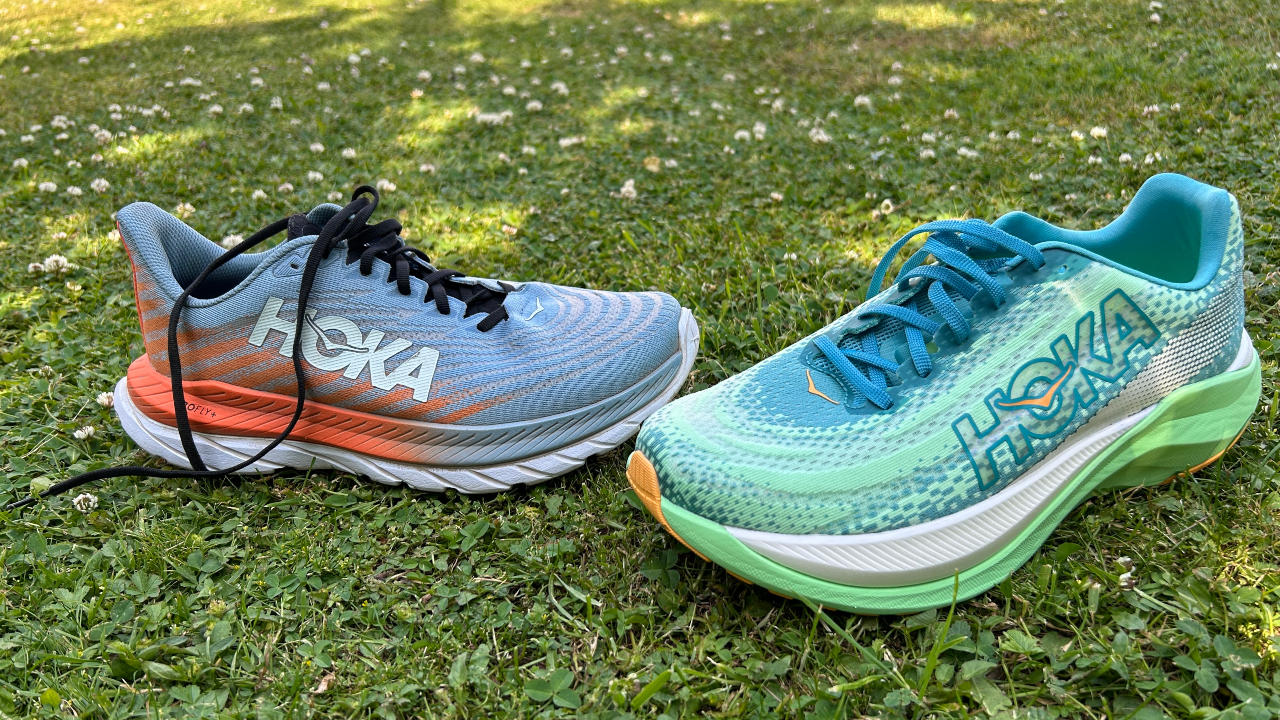
Another big difference from the Hoka Mach 5 is that the Mach X has a rubber outsole, with good coverage on the forefoot and heel, whereas the Mach 5 uses a rubberized EVA. The Mach X should be more durable as a result, though I didn’t notice an improvement in grip from the rubber.
The Mach X has a mesh upper with cushioning around the heel collar. It fits well in my normal running shoe size, and isn’t as narrow as some Hoka shoes, such as the Mach 5.
At 9.3oz/265g in my US 9.5, the Mach X isn’t a heavy shoe, though it’s also not as light as many plated trainers in its category, which affects its performance for speed sessions.
How I Tested This Shoe
I’ve run 30 miles (50km) across four runs in the Hoka Mach X, doing a mix of easy and speedy daily training in the shoe to test its versatility. I have also tested the Hoka Mach 5 and many plated training shoes from other brands.
Running Performance
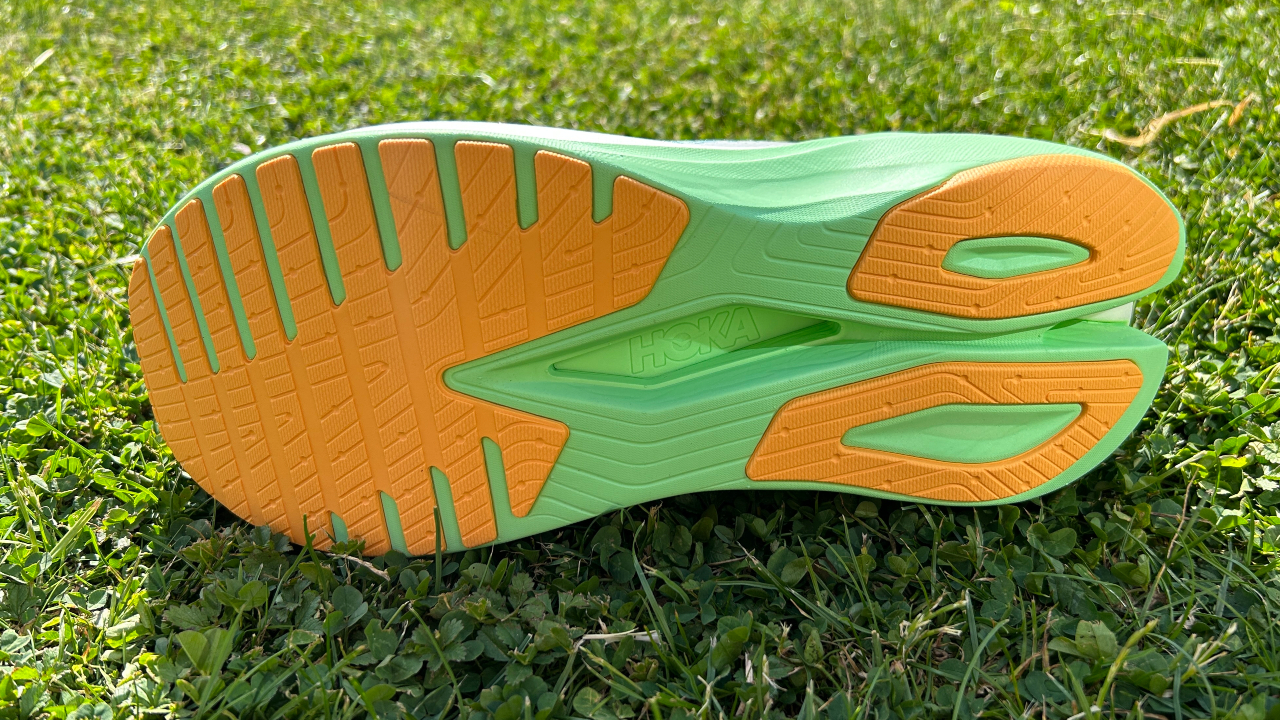
Given the high stack and the use of a Peba-based foam in the midsole, I expected a bouncy ride from the Mach X, boosted by the plate. However, it’s more of a smooth operator, with the rocker helping to transition you onto your toes before the plate adds extra punch to your toe-off.
It’s comfortable and stable for such a big shoe, and I enjoyed rolling through easy runs in it. The foam isn’t squishy or harsh, and with the plate aiding efficiency the Mach X is a great option for long runs.
However, the shoe didn’t impress as much during faster runs. I did a hard 45-minute progression run in the Mach X and in the closing 15 minutes it felt big and unwieldy. When trying to push the pace it was harder to get into a rhythm with the rocker, and the shoe felt heavier and less explosive than rivals like the Endorphin Speed 3.
It’s better at moderate paces, and would be a good tempo shoe, but for intervals or race pace efforts the Mach X didn’t work for me. It may be a better option for these runs for heavier runners, who might sink more into the fairly firm midsole and get more back from the plate.
Is The Hoka Mach X Worth It?
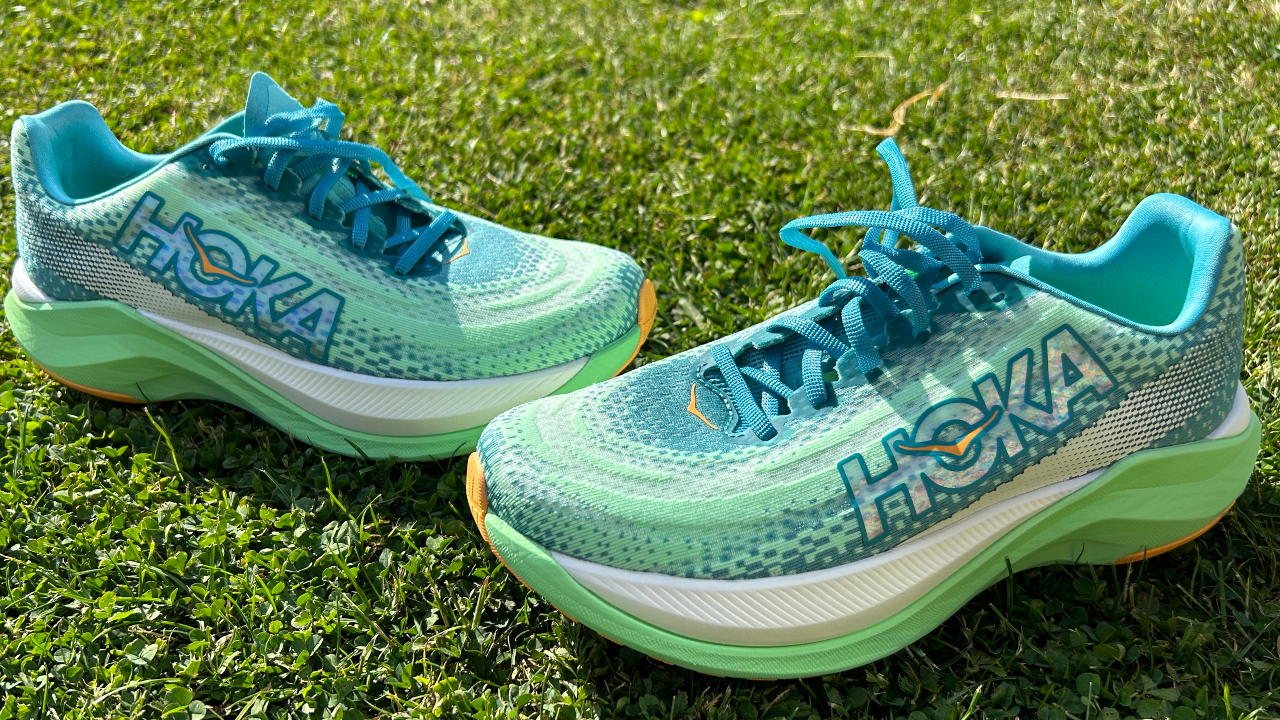
The Hoka Mach X is a good product, and it’s not the fault of the shoe that I had such expectations for it. It did fall short of those expectations, though. More importantly, it also doesn’t match up to the performance of other plated options like the Saucony Endorphin Speed 3 and Asics Magic Speed 3, which are lighter and speedier, and still good options for easy runs.
The Mach X is the best of the trio for easy efforts because it’s so comfortable and stable, but losing that edge on speed is problematic because there are lots of great shoes for relaxed runs that come in cheaper—including the Hoka Mach 5, which is also lighter than the X.
For a super-trainer, the Mach X may suit beginners (or heavier runners) better than the lighter, less stable options like the Magic Speed and Endorphin Speed. But in an increasingly loaded category of shoes, the Mach X doesn’t do enough to stand out. It’s a good shoe but it’s going up against some of the best all-rounders launched in recent years.

Nick Harris-Fry is a journalist who has been covering health and fitness since 2015. Nick is an avid runner, covering 70-110km a week, which gives him ample opportunity to test a wide range of running shoes and running gear. He is also the chief tester for fitness trackers and running watches, treadmills and exercise bikes, and workout headphones.
